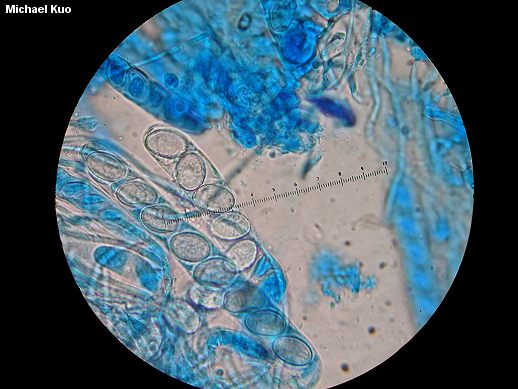 |
| Fig. 1 Growing on a decaying log (Kuo, 2003). |
Habitat: Found on fallen decaying log on a hillside.
Location: West Wood Park
Description: Grows alone or in colonies; fruits from fallen trees, on the stump and branches (rarely found growing on living hardwoods). It is widely ditributed and very common. The fruiting body is 8-35 cm across, consisting of branches that arise from a more or less central core, with spines about 1 cm long hanging in rows along the branches; white, or in age discoloring brownish to yellowish. white spore print (Kuo, 2003).
Description: Grows alone or in colonies; fruits from fallen trees, on the stump and branches (rarely found growing on living hardwoods). It is widely ditributed and very common. The fruiting body is 8-35 cm across, consisting of branches that arise from a more or less central core, with spines about 1 cm long hanging in rows along the branches; white, or in age discoloring brownish to yellowish. white spore print (Kuo, 2003).
Keys used: Arora, D. (1986). Mushrooms Demystified. New York: Ten Speed Press.
Keying steps:
Key to the Basidiomycetes1A. Basidia and spores borne externally (on the exposed surfaces of gills, tubes,
spines, branches, lobes, etc.); spores forcibly discharged at
maturity, i.e., a spore print often (but not always) obtainable; fruiting body with a cap and stalk, or clublike,
or branched, or bracketlike, or crustlike (without a stalk or sometimes without a cap) or lobed or bloblike, etc. ... 2
2B. Not as above... Hymenomycetes, p. 58
Key to the Hymenomycetes
1B. Not as above; pores and tubes absent... 3
3B. Gills absent (but spines, warts, folds, veins, or wrinkles may be present)... 4
4B. Not as above... Aphyllophorales, p. 548
Key to the Aphyllophorales, p. 548
1A. Fruiting body with a layer of downward-pointing spines or "teeth" on underside of cap or with icicle-like spines
hanging from branches or a cushion of tissues... Hydnaceae, p. 611
Key to the Hydnaceae
1B. Not as above; not growing on cones; stalk if present usually thicker...2
2B. Not as above... 3
3A. Growing on wood... 4
4A. Fruiting body a branched framework or unbranched cushion of tissue from which spines are suspended (i.e. icicle-like);
lacking a distinct cap... Hericium,p. 613
Key to Hericium
1B. Fruiting body branched, the spines hanging from the branches or branch tips (sometimes scarcely branched and
very compact, but if so, then usually growing on conifers)... 2
2B. Growing mainly on hardwoods; fruiting body white when fresh (but may turn yellowish in age); widely distributed...3
3B. Not as above; spines often long (up to 4 cm), arranged mostly in tufts or clusters, especially at the branch tips;
branching open or compact.... H. coralloides (see H. abietis)
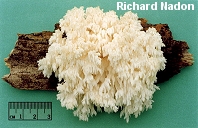 |
| Fig.2 Growing on a woody substrate. Giving an idea of the size of the fungus (Kuo, 2003). |
 |
| Fig. 3 Giving an idea of the size of the fungus (Kuo, 2003). |
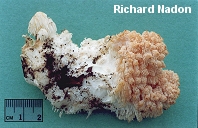 |
| Fig. 4 This toothy fungus is white when fresh, but over time will eventually discolor and become yellowish or brownish (Kuo, 2003). |
Additional References:
Kuo, M. (2003, October). Hericium coralloides. Retrieved from the MushroomExpert.Com Web site: http://www.mushroomexpert.com/hericium_coralloides.html
Links:
http://www.mushroomexpert.com/hericium_coralloides.html
http://www.messiah.edu/Oakes/fungi_on_wood/teeth%20and%20spine/species%20pages/Hericium%20coralloides.htm
http://www.arkive.org/coral-tooth/hericium-coralloides/
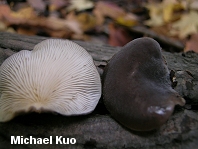
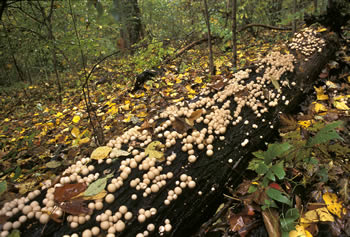
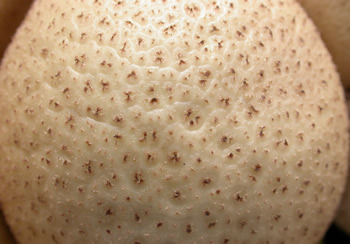
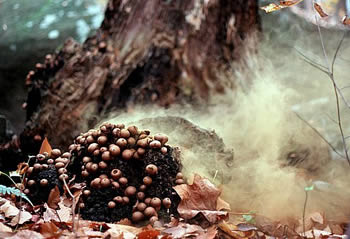
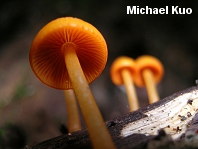
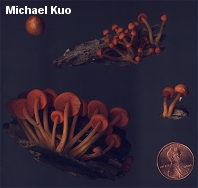
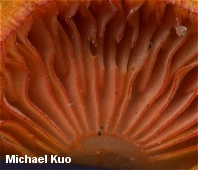
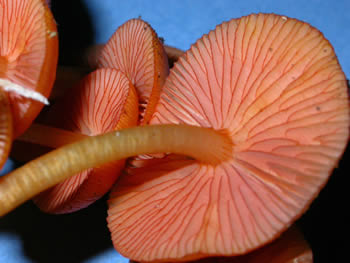









.jpg)
